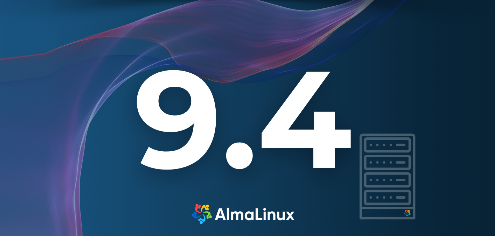
Introduction
AlmaLinux 9 Server is a free and open-source Linux distribution that provides a stable and secure platform for server environments. It's a popular choice for both enterprise and personal use due to its reliability and robust features. This guide will walk you through the steps to install AlmaLinux 9 Server on your system.
Pre-Installation
Step [1] This is the configuration examples for AlmaLinux 9 that is the downstream branch of Red Hat Enterprise Linux 9.x. AlmaLinux 9 will be supported until the end of support phase of RHEL 9. Download the AlmaLinux 9 ISO file for installation from the following site.
Step [2] After downloading ISO of AlmaLinux 9, Burn it to a DVD with a burning application to create an installation disk. If you create it with the function of Windows 10/11, Insert an empty DVD media in DVD drive. Next, right-click the ISO image of AlmaLinux 9 and select [Burn Disk image] in the menu.

Step [3] Click [Burn] button and start burning. After finishing burning, eject the disk and proceed to the installation step.

Installation
Step [1] Insert the AlmaLinux 9 installation disk on your computer and restart it, then, AlmaLinux 9 Installer starts and following screen is displayed. Push the Enter key to proceed.

Step [2] Select the language you'd like to use during the installation. The selected language on here also will be set the default System language If you never change [Language Support] setting in next step.

Step [3] This is the default Installation Summary section for some basic configurations. On this example, Configure Keyboard Map first on [LOCALIZATION] category, Click [Keyboard] icon.

Step [4] Click [+] button on under-left.

Step [5] Select your using keyboard type on the list and click [Add] button.

Step [6] After adding keyboard layout, send up your keyboard on the top for 1st priority like follows and Click [Done] button which is upper left to finish.

Step [7] Back to the default Installation Summary section like [3], Next, set your timezone, Click [Time & Date] icon. Click a point on the map you'd like to set your timezone and push [Done] button which is on the upper left.

Step [8] Back to the default Installation Summary section like [3], Next, Click [Software Selection] icon to install AlmaLinux. Choose the Software Selection on the list you'd like to install. On this example, it Chooses [Server] selection.

Step [9] Back to the default Installation Summary section like [3], Next, Click [Installation Destination] icon to select a disk you install AlmaLinux. If some disks are attached on your computer, you need to select an installation destination disk. Furthermore, if you'd like to edit the partition layouts manually, select [Custom] on the [Storage Configuration] section, or if you select [Automatic] on it, partitioning are automatically done. Then partitioning is configured as [/boot], [/], [/home], [swap]. (but if the size of destination disk is small like follows, [/home] is not separated). If That's OK all, Click [Done] button that is upper-left to finish disk configuration.

Step [10] Back to the default Installation Summary section like [3], Next, Click [Network & Host Name] icon. If you already have a Hostname for this new AlmaLinux Server, Input the Hostname on [Host Name] field. (possible to set it after installing).

Step [11] Back to the default Installation Summary section like [3], Next, Click [Root Password] icon under [USER SETTINGS] category. Set root account password on here if you enable root user account.

Step [12] Back to the default Installation Summary section like [3], Next, Click [User Creation] icon under [USER SETTINGS] category. Create a common user account on here. If you disable root user account on previous section, check a box [Make this user administrator] to grant administrative privilege to this common account.

Step [13] Confirm Selections and If that's OK all, Click [Begin Installation] to install AlmaLinux.

Step [14] After finishing Installation, Click [Reboot System] button on the lower right to restart computer.

Step [15] After restarting computer, login prompt is shown like follows. Login with root user or a common user you set during the installation. If logined normally, AlmaLinux Installation successfully finished.
AlmaLinux 9.1 (Lime Lynx)
Kernel 5.14.0-162.6.1.el9_1.x86_64 on an x86_64
Activate the web console with: systemctl enable --now cockpit.socket
localhost login:
- Get link
- X
- Other Apps









Comments
Post a Comment
Thank you for your comment! We appreciate your feedback, feel free to check out more of our articles.
Best regards, Bizantum Blog Team.